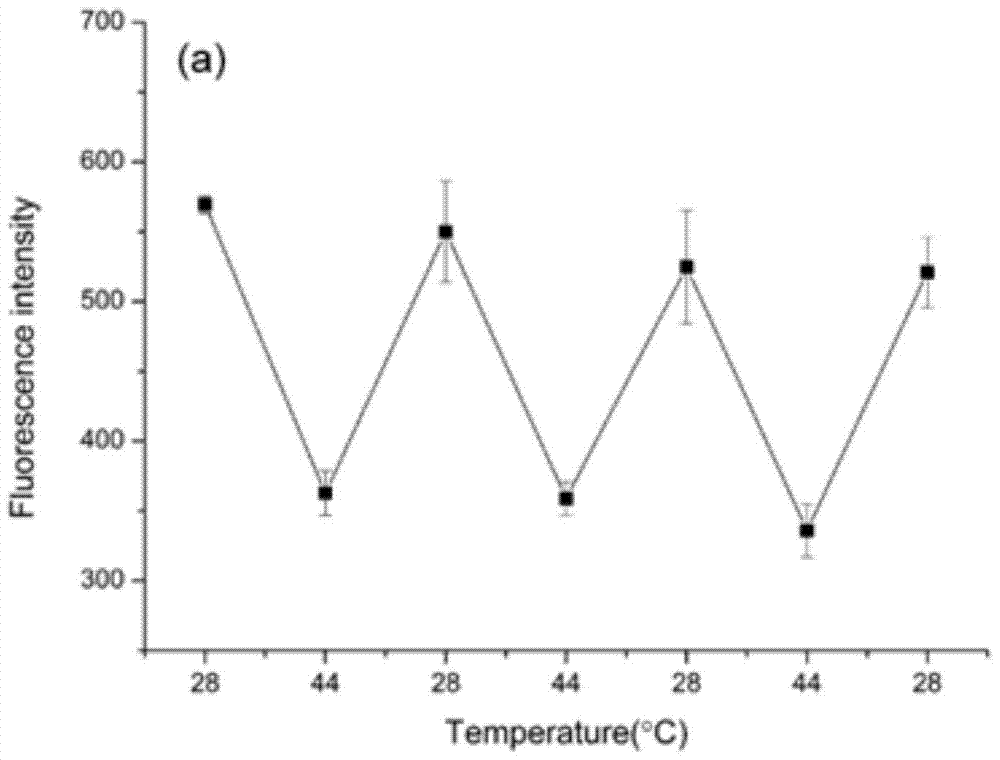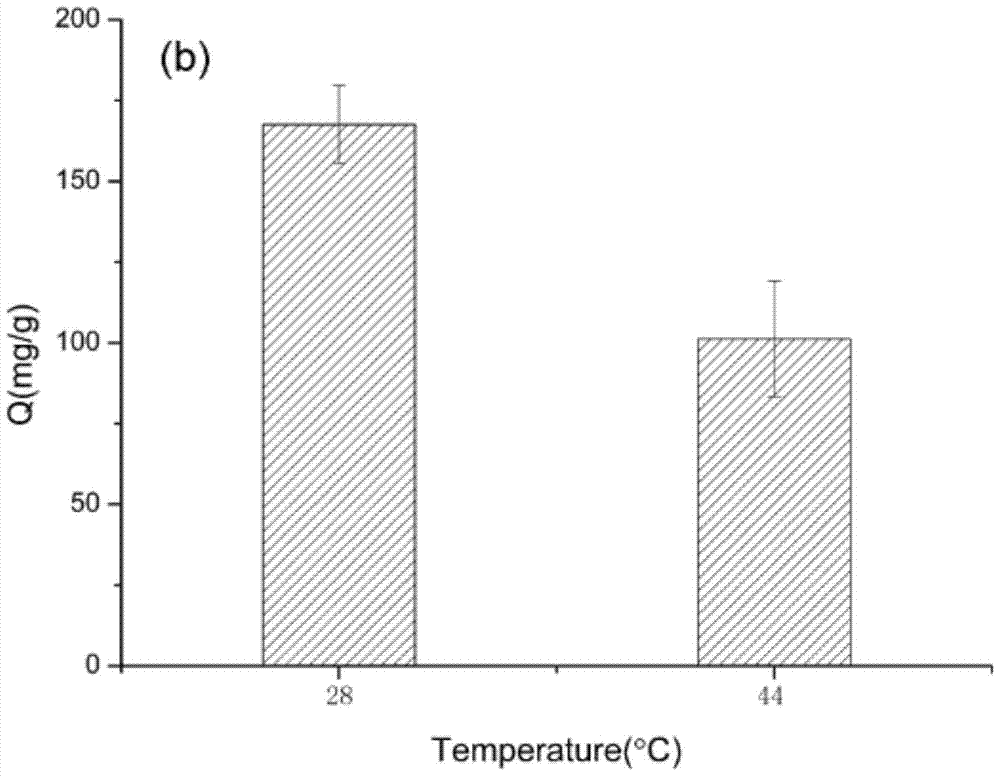A kind of preparation method of metal frame thermosensitive molecularly imprinted polymer
A metal framework, molecular imprinting technology, applied in chemical instruments and methods, ion exchange, ion exchange regeneration, etc., can solve the problems of lack of specificity of MOF materials, limitation of enrichment of specific targets, etc., and achieve strong enrichment and sensing. Performance, the effect of broad application prospects
- Summary
- Abstract
- Description
- Claims
- Application Information
AI Technical Summary
Problems solved by technology
Method used
Image
Examples
Embodiment 1
[0037] A method for preparing a metal frame temperature-sensitive molecularly imprinted polymer, comprising the following steps,
[0038] 1) Weigh 0.78mmol of yttrium acetate, 0.2mmol of ytterbium acetate and 0.02mmol of erbium acetate and dissolve them in 6mL of oleic acid and 17mL of octadecene. The mixture is heated to 160°C to form a transparent solution, which is naturally cooled to room temperature. Add 2.5mmol NaOH and 4mmol NH dropwise 4 A solution of F in 10 mL of methanol was stirred at room temperature for 30 min. Then, methanol was gradually removed by heating. After vacuuming at 100°C for 10 minutes, it was heated to 300°C under the protection of argon and maintained for 1h. After the resulting solution was naturally cooled, the oil-soluble up-converting nanoparticles were precipitated in ethanol;
[0039] 2) Disperse 100 mg of the above-prepared up-conversion nanoparticles in 3 mL of toluene for later use. Weigh 300mg of polyacrylic acid (PAA) and dissolve it ...
Embodiment 2
[0052] 1) Weigh 0.78mmol of yttrium acetate, 0.2mmol of ytterbium acetate and 0.02mmol of erbium acetate and dissolve them in 6mL of oleic acid and 17mL of octadecene. The mixture is heated to 160°C to form a transparent solution, which is naturally cooled to room temperature. Add 2.5mmol NaOH and 4mmol NH dropwise 4 A solution of F in 10 mL of methanol was stirred at room temperature for 30 min. Then, methanol was gradually removed by heating. After vacuuming at 100°C for 10 minutes, it was heated to 300°C under the protection of argon and maintained for 1h. After the resulting solution was naturally cooled, the oil-soluble up-converting nanoparticles were precipitated in ethanol;
[0053] 2) Disperse 100 mg of the above-prepared up-conversion nanoparticles in 3 mL of toluene for later use. Weigh 300mg of polyacrylic acid (PAA) and dissolve it in 30mL of diethylene glycol, heat the mixture to 110°C, and add the upconverted toluene solution, maintain 110°C for 1h under the p...
Embodiment 3
[0061] 1) Weigh 0.78mmol of yttrium acetate, 0.2mmol of ytterbium acetate and 0.02mmol of erbium acetate and dissolve them in 6mL of oleic acid and 17mL of octadecene. The mixture is heated to 160°C to form a transparent solution, which is naturally cooled to room temperature. Add 2.5mmol NaOH and 4mmol NH dropwise 4 A solution of F in 10 mL of methanol was stirred at room temperature for 30 min. Then, methanol was gradually removed by heating. After vacuuming at 100°C for 10 minutes, it was heated to 300°C under the protection of argon and maintained for 1h. After the resulting solution was naturally cooled, the oil-soluble up-converting nanoparticles were precipitated in ethanol;
[0062] 2) Disperse 100 mg of the above-prepared up-conversion nanoparticles in 3 mL of toluene for later use. Weigh 300mg of polyacrylic acid (PAA) and dissolve it in 30mL of diethylene glycol, heat the mixture to 110°C, and add the upconverted toluene solution, maintain 110°C for 1h under the p...
PUM
 Login to View More
Login to View More Abstract
Description
Claims
Application Information
 Login to View More
Login to View More - R&D
- Intellectual Property
- Life Sciences
- Materials
- Tech Scout
- Unparalleled Data Quality
- Higher Quality Content
- 60% Fewer Hallucinations
Browse by: Latest US Patents, China's latest patents, Technical Efficacy Thesaurus, Application Domain, Technology Topic, Popular Technical Reports.
© 2025 PatSnap. All rights reserved.Legal|Privacy policy|Modern Slavery Act Transparency Statement|Sitemap|About US| Contact US: help@patsnap.com



